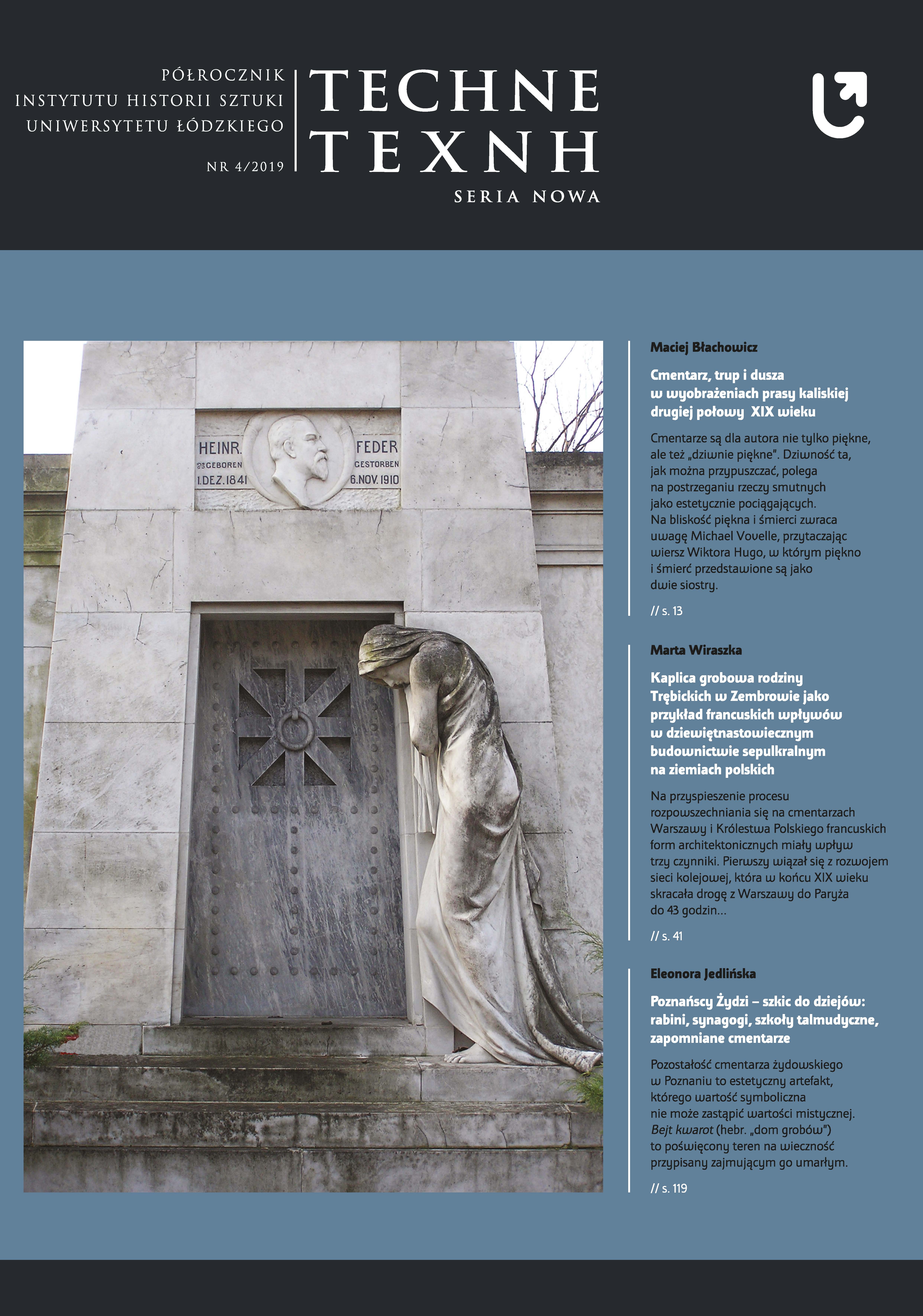Cmentarz w malarstwie i grafice Józefa Czajkowskiego
The cemetery theme in paintings and graphics by Józef Czajkowski
Author(s): Monika NowakowskaSubject(s): Fine Arts / Performing Arts, Visual Arts
Published by: Wydawnictwo Uniwersytetu Łódzkiego
Keywords: Józef Czajkowski; painting; Young Poland; modernism; cemetaries
Summary/Abstract: The cemetery is a topic seemingly created to weave decadent reflections on the ephemerality and fragility of human life, so it is no wonder that it was eagerly taken up by Young Poland modernists. One of them was Józef Czajkowski (1872–1947) – an extremely versatile artist who contributed to the development of Polish architecture, craftsmanship and education, as well as an experimental graphic artist and painter. This is evidenced by the color lithograph from 1903, “Monastery Cemetery in Krakow” and the oil painting on canvas from 1910, “Winter Garden”, which is an extension of the graphic composition. Both in lithography and in an oil painting, Czajkowski showed his mastery in synthesizing a composition, building space and conveying the atmosphere of a place. Especially the tasteful nuances within the narrow range of white, black and brown, used in “Winter Garden”, show Czajkowski’s painterly class, as it turns out – a landscape’s painter as outstanding as his younger brother Stanisław Czajkowski. Both brothers were students of Jan Stanisławski. Although, Józef seems to be a more original and consummate colorist and symbolist, he has not devoted himself to painting. In his mature work, he strove to synthesize the arts, both in terms of workshop and content. That is why the sepulchral theme, appearing also in the 1900 painting “Kirkut”, does not seem to be accidental and deserves a thorough analysis – also in the context of research on graphics and painting of Young Poland’s modernism.
Journal: TECHNE. Seria Nowa
- Issue Year: 2019
- Issue No: 4
- Page Range: 179-188
- Page Count: 10
- Language: Polish

